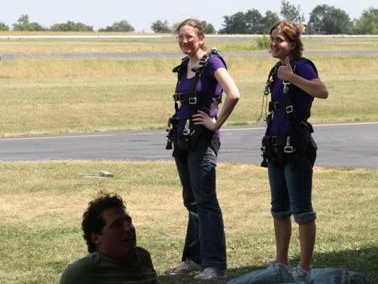I knew I was in for some fun when we got to the part of the release form that stated something to the effect of “I certify that, apart from the conditions listed below, I am free from any medical condition…”

My list of medical conditions isn’t that long–but every condition means skydiving is not an ideal sport for me. I listed the group: hypotension, vertigo, exercise-induced bronchospasm.
I’d been drinking Powerade (with plenty of sodium to manage the hypotension). I had my meclizine along (to manage the vertigo). I had my inhaler (to manage the bronchospasm.) The only one I was really worried about was the hypotension. It’d really stink to black out while in free-fall, thus missing the experience I’d paid so much to have.
My friends started to worry for me. “Will they still let you skydive?” they wondered.
I told them there was no doubt. We’d all be jumping tandem–which meant the instructor tied to our backs would be doing the work. If I were to have a medical event mid-jump, the only problem would be that I wouldn’t be able to enjoy my jump.
I really wanted to enjoy my jump.
Sure enough, the instructor looked over my list, asked if I used an inhaler, and never said another word.
I loaded the Powerade, took my Meclizine, and entirely forgot about the inhaler (but really, jumping from an airplane is not exactly aerobic exercise!)
Then, when my time came, I geared up for the jump!

